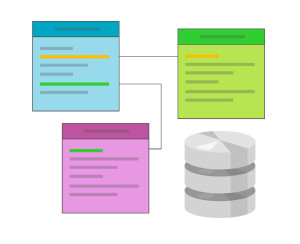Please keep reading. How do those words make you feel? I’ve made a polite request. Do you want to take it up? What if instead I gave you a reason to read? Here goes. “Please” can be a problem. If you’re not sure whether to write user instructions (including CTAs) as polite requests or stern directives, keep reading. In this post, I’ll show you how to decide.
Please as a problem
The word “please”—so humble, so ubiquitous—can pose problems for online businesses trying to communicate with users. Often, I find clients torn between being polite—making a request with “please” in it—and presenting actions as directives which, if they’re not carefully worded, can sometimes seem like stern demands. Some clients tell me they don’t want to be seen to tell users what to do—they’d rather “invite them to act.” Most of the time, I’d rather inspire them to act. The fact that you’re asking a user to do something doesn’t necessarily mean you must use “please”. In fact, including “please” in your text can have a negative impact, adding length to copy, making your brand seem to lack confidence, and wasting valuable opportunities to really, truly inspire action. Of course, that’s not to say there’s no place for saying “please”. If you’re tossing up whether or not to use “please” in some instructional text, there are a few issues you’ll need to weigh up. Let’s look at them now.Context
Where are you putting this piece of copy? On your homepage? In an email? In a modal window? The first thing to look at is the context in which the text is appearing, as this will give you some idea of whether or not the audience is likely to be enthusiastic about following the instruction. For example, let’s imagine you’re drafting a forgotten password email. It probably finds the user in a state of mild frustration (at least, that’s the state I’m in when I’ve forgotten a password). So it’s probably a better option to value efficiency of your communication over extra verbiage in this case. In other words, I’d rather read “Click here to reset your password” than “Please click here to reset your password.” If you think “Click here” is too stark, consider wording that might help to reduce frustration: “Simply click to reset your password” or “Click to reset your password now.” The same applies to help content: people seeking help want answers, and then to go on their way. So it makes good sense to present instructions for using your service as clear, concise directives rather than requests.Difficulty or hassle
How difficult is the task? How much of a pain is it for the user? To me, this is probably the biggest factor in deciding whether or not to use “please” in the CTA. If you’re making the user jump through some hoops—for example, complete a credit card verification process—you might want to be polite about it and use “please”: “Please check your email for more instructions.” Or not. Maybe you’ll want to make it sound simple: “Just one step to go! Enter the value we deducted into the box, and click Submit.” Again, context matters. As well as considering the medium (email, web page, form, etc.) consider also the journey the user’s on when they see the CTA, and what will happen after they act on it. Imagine you’re asking for feedback from from a customer who’s just got a refund from your business. You want their feedback, sure. But how much of a hassle is it for them to give it to you? A big hassle, I’d guess, especially as at least some of these people may never want anything to do with your business after this. So you may want to make the feedback CTA as respectful as you can, and adding “please” might be an important part of that.Brevity
I’m all for keeping CTAs and instructions short. Seriously short. So wherever I can cut words—words like “please”—I usually will. Imagine you have a sales email that links to a landing page. You know you have limited time to catch users’ attention and inspire a click. So why waste seconds with niceties? In this context, rather than getting polite at the crucial moment, I’d focus more heavily on writing all of the email copy so it’s empathetic to customers, and gives them an irresistible reason to act when they get to the CTA. Face it: if your offer’s not compelling, the extra verbiage isn’t going to get recipients to click. “Please click for more information” is almost always less wearying if it’s written as simply, “Learn more.” Politeness won’t usually get people over the line.Benefits
I’d rather “sell” an action on the basis of the benefits it will give the user than plead with them to act. Every time. There’s selling and there’s selling—not every CTA has to take the form of “Click to download your free report and start crushing it today!” But if you can give a user a good reason to take the action you want, you’ll have a much better chance of getting them to do it. An instruction like “Call us for your free consultation” needs no “please”. You’re offering a freebie! If you mention a beneficial outcome in the instruction itself, dispense with the niceties and cut straight to the chase.Brand
I mentioned empathy above. If your brand is “on the level”—genuine, relatable, friendly—you’ll probably use “please” sparingly. Friends don’t say “please” to each other all that often. We’re too familiar to require such pleasantries at every turn. One place I find people usually want to use please is when they’re inviting users to contact them: “If you have any questions, please contact us.” But when was the last time you wrote or said to a friend, “Please contact me”? You might leave a phone message saying, “can you let me know?” or “call me.” If it’s especially important that you hear from them, you might go so far as to say, “I’d love to hear from you.” But “Please contact me”? It’s too formal and stilted for use between friends. If you’re extending help to users, you might be better off if you’re more inviting. Consider:- “If you have any questions, get in touch.”
- “If you have any questions, give us a call. We’re here to help!”
- “If you have any questions, just reply to this email.”
- “Got a question? Get in touch.”
Your thoughts, please
This is the basic approach I use to rationalize the use or omission of the word “please” in any copy—from sales emails to interface text to video scripts. By balancing these factors, and playing around with a few options, you should be able to arrive at a decision about whether or not to use please in any situation. But how do you do it? Have you ever thought about how you use please in your user communications, instructions, and CTAs? What’s your approach? Let us know in the comments.Frequently Asked Questions (FAQs) about Using ‘Please’ in Instructions and CTAs
Why is it important to use ‘please’ in instructions and CTAs?
The use of ‘please’ in instructions and CTAs is crucial as it adds a polite tone to your communication. It makes your requests or demands sound less authoritative and more respectful. This can help in building a positive relationship with your audience, making them more likely to comply with your requests or instructions.
When should I avoid using ‘please’ in my communication?
While ‘please’ is generally seen as a polite term, overusing it can make your communication sound desperate or overly formal. It’s best to avoid using ‘please’ in situations where you need to be assertive or when you’re giving clear, direct instructions.
How can I balance politeness and assertiveness in my communication?
Balancing politeness and assertiveness in your communication can be tricky. It’s important to be respectful without sounding weak or indecisive. You can achieve this by using ‘please’ sparingly and combining it with clear, direct language. For example, instead of saying “Could you please…”, you could say “I would appreciate if you could…”.
Can I use ‘please’ in professional emails?
Yes, you can use ‘please’ in professional emails. However, it’s important to use it appropriately. Overusing ‘please’ can make your emails sound overly formal or desperate. It’s best to use ‘please’ when making a request or giving instructions.
What are some alternatives to using ‘please’ in my communication?
There are several alternatives to using ‘please’ in your communication. You could use phrases like “I would appreciate if you could…”, “Could you kindly…”, or “I would be grateful if you could…”. These phrases convey politeness without sounding overly formal or desperate.
How can I use ‘please’ effectively in CTAs?
In CTAs, ‘please’ can be used to add a polite tone to your request. However, it’s important to use it sparingly and in the right context. For example, instead of saying “Please click here”, you could say “Click here, please”. This makes your CTA sound less demanding and more respectful.
Is it necessary to use ‘please’ in all my communications?
No, it’s not necessary to use ‘please’ in all your communications. The use of ‘please’ should be based on the context and the tone you want to convey. In some situations, using ‘please’ can make your communication sound overly formal or desperate.
Can the use of ‘please’ affect the success of my CTAs?
Yes, the use of ‘please’ can affect the success of your CTAs. A polite tone can make your audience more likely to comply with your request. However, overusing ‘please’ can make your CTAs sound less assertive and less compelling.
How can I determine when to use ‘please’ in my communication?
Determining when to use ‘please’ in your communication can be based on the context and the tone you want to convey. If you want to sound polite and respectful, you can use ‘please’. However, if you need to be assertive or give clear, direct instructions, it’s best to avoid using ‘please’.
What are some common mistakes to avoid when using ‘please’ in my communication?
Some common mistakes to avoid when using ‘please’ in your communication include overusing ‘please’, using ‘please’ in situations where you need to be assertive, and using ‘please’ in a way that makes your communication sound overly formal or desperate. It’s important to use ‘please’ appropriately and in the right context.
Georgina has more than fifteen years' experience writing and editing for web, print and voice. With a background in marketing and a passion for words, the time Georgina spent with companies like Sausage Software and sitepoint.com cemented her lasting interest in the media, persuasion, and communications culture.


